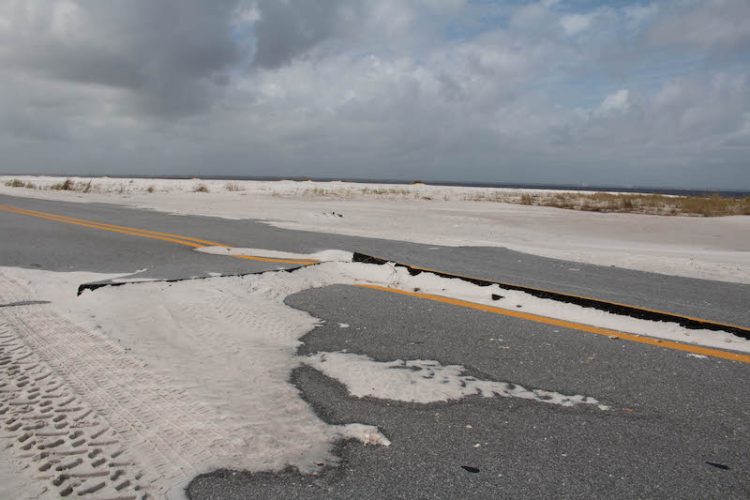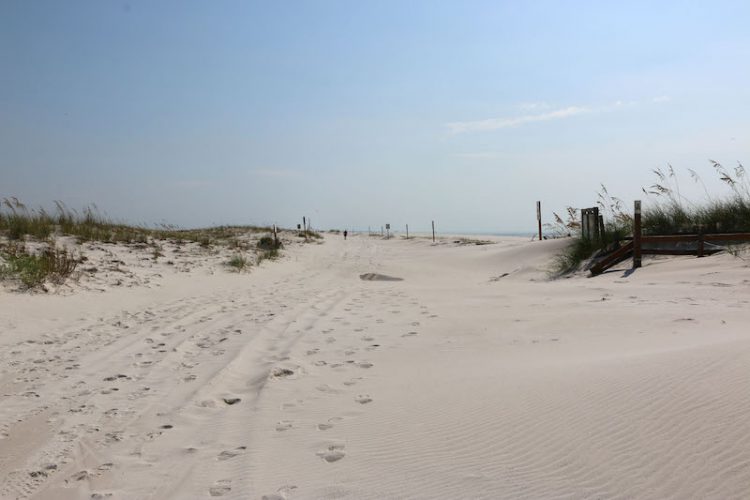Full Title: Decision support for multi-species coastal habitat management on properties with multi-use objectives
The objective of the proposed project was to provide a transparent decision support framework to make optimal recommendations for listed species with conflicting habitat needs while also considering landowner objectives using a case study at the Gulf Islands National Seashore complex.
Lead Investigator: Sara Zeigler, United States Geological Survey, szeigler@usgs.gov
Natural Resource Manager: Patty Kelly, U.S. Fish and Wildlife Service
Project Team: James Flocks, Julien Martin, Davina Passeri, and Simeon Yurek (U.S. Geological Survey)
Collaborators: Raya Pruner and Emily Evans (Florida Fish and Wildlife Conservation Commission); Kelly Irick (National Park Service – Gulf Islands National Seashore); and Summer Waters (Florida Park Service—Panhandle Region)
Federal Program Officer/Point of Contact: Frank Parker (frank.parker@noaa.gov)
Award Amount: $97,200
Award Period: October 2021 – September 2023.
Why it matters: Managing coastal barrier islands for fish and wildlife conservation and human-use is particularly challenging because these islands are dynamic ecosystems with landscapes that change as sand is moved by wind and water. Following historic hurricane seasons, private and federal landowners throughout the Gulf are faced with a complex suite of decisions regarding restoration of coastal habitats. Uncertainties include where to rebuild coastal roads and other infrastructure, where to place overwashed sediments cleared from roads and parking lots, and where to plant native vegetation that would improve dune stability and beach mice habitat. The Florida Fish and Wildlife Conservation Commission and the U.S. Fish and Wildlife Service desire a framework that allows them to make recommendations regarding restoration projects and their impacts on threatened or endangered species like sea turtles, beach mice, and shorebirds in a manner that is sensitive to landowner needs and conflicting species-specific habitat needs.
What the team did: In a series of workshops, the team worked through components of the PrOACT decision model (Problem Statement, Objectives, Alternatives, Consequences, Tradeoffs) to assure that the objectives, mandates, values, preferences, and risk attitudes of managers and land owners were articulated. They used these workshops to better understand the scope of the problem, fundamental goals to be achieved, potential alternative decisions, and difficult tradeoffs during the decision-making process. The team also compiled a list of published spatial data that could be used to assess habitat change over time and investigate the consequences of potential management actions on conservation objectives on Santa Rosa Island in Florida. Finally, they conducted a literature review of beach mouse and shorebird habitat selection and movement patterns.
Summary of outcome: The project culminated in a workshop where project team members refined components of the PrOACT process. Managers and researchers gave presentations on prior work that could be leveraged to answer management-related questions. This gave managers the tools to make short-term, post-hurricane decisions at the Gulf Islands National Seashore, while also providing important information that could be used to support future long-term decisions related to sea level rise and environmental change. The workshop participants also visited the Gulf Islands National Seashore to view habitat conditions and discuss associated management challenges for parks and fish and wildlife management. The compiled geospatial data and beach mouse and shorebird habitat selection patterns could be used in models and other tools as the project is further developed.
Not applicable
Not applicable
Not applicable
Not applicable
 Official websites use.gov
A .gov website belongs to an official government organization in the United States.
Official websites use.gov
A .gov website belongs to an official government organization in the United States.
 Secure .gov websites use HTTPS
A lock or https:// means you’ve safely connected to the .gov website. Share sensitive information only on official, secure websites.
Secure .gov websites use HTTPS
A lock or https:// means you’ve safely connected to the .gov website. Share sensitive information only on official, secure websites.

